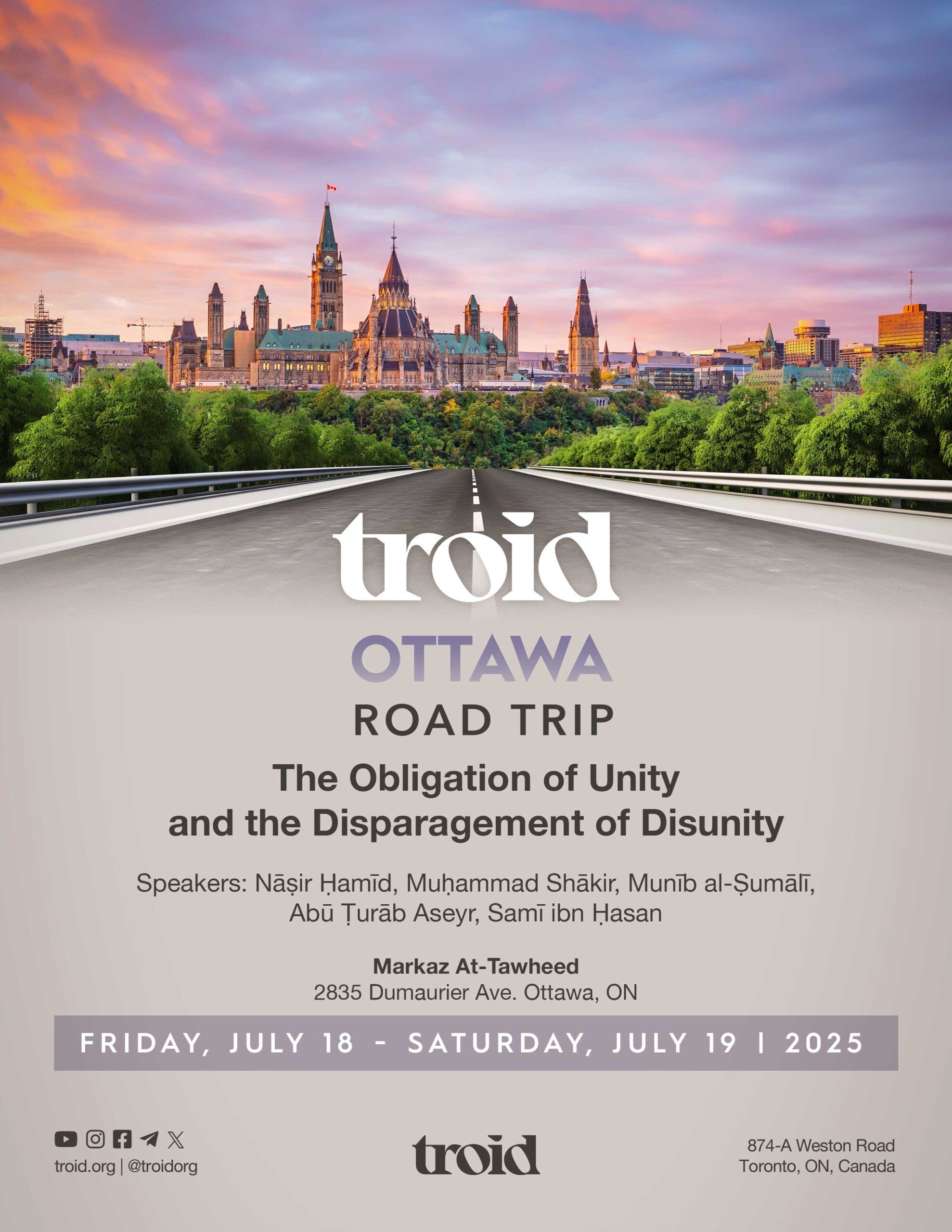Guidelines Regarding the Texts Mentioning Kufr, a Negation of Faith or Entry to Paradise etc.
Shaykh Mūsá Richardson


Guidelines Regarding the Texts Mentioning Kufr, a Negation of Faith or Entry to Paradise, or Punishment in the Fire for Certain Sins:
Like:
- “Insulting a Muslim is fusūq (sinful disobedience), and fighting him is kufr.”
- “None of you has īmān until he loves for his brother what he loves for himself.”
- “The qattāt (tale-carrier) shall not enter Paradise.”
- “Whoever deceives us is not from us.”
And like the āyah of the murderer (4:93) abiding in the Hellfire, and all other texts threatening of severe punishment for sins that other texts prove do not remove a person from the fold of Islām.
Some scholars, like Ibn Ḥajr in al-Fatḥ and others refer to a position attributed to some of the early scholars, like Aḥmad ibn Ḥanbal and Sufyān al-Thawrī: to not explain these texts and leave them as they are, so that their effects of tarhīb (scaring people) from the actions remains fully effective…
- Ahl al-Sunnah understand these texts in light of the entire body of texts on ʿaqīdah, and do not take any one of them alone to build their beliefs upon, as is the way of the deviant sects.
- The texts prove that the sins mentioned above do not take someone outside of Islām by themselves.
- So kufr like in #1 is kufr less than the kufr that takes someone outside of Islām. Any sin referred to as kufr must be considered at least a major sin.
- The negation of a person’s īmān like in #2 above is a negation of completeness of īmān, not a negation in totality.
- The negation of the qattāt entering Paradise in #3 means initially, not that he must remain in the Hellfire forever.
- When the Prophet (ﷺ) said about an action, like deception in example #4 above, that the person who does it is not from us, he meant: not adhering to our guidance in the proper way. Thus, deception is a major sin that does not take a person out of Islām by itself.
- The threat mentioned in the verse of the murderer is of entrance to the Fire, but not eternally, and so on.
- Some scholars allow these texts to apply to certain cases, like when a person deceives the Muslims by pretending to be a Muslim, and inwardly hiding disbelief. In this case, the one who deceives us is not from us, ie. not from the Muslims. Similarly, someone who kills another Muslim, declaring it to be permissible would be in the Fire forever (because he declares ḥalāl what Allāh told us is ḥarām, and he would be a disbeliever with this belief before he even killed anyone). However, to restrict the texts to only these meanings would mean that the Muslims do not need to fear the punishments mentioned in the texts, and they would lose their true meanings of tarḥīb (scary warnings) for the Muslims, as guidance and warnings for the Muslims, the ones who are concerned with following the texts in the first place.
- Some scholars, like ibn Ḥajr in al-Fatḥ and others refer to a position attributed to some of the early scholars, like Aḥmad ibn Ḥanbal and Sufyān ath-Thowree: to not explain these texts and leave them as they are, so that their effects of tarḥīb (scaring people) from the actions remains fully effective. It is also mentioned that they disliked taʾwīl, explaining the texts, like kufr dūna kufr, partial not complete negation of īmān, etc. The following points are vital to understand this point, as it has confused people of late:
- The principle of darʾ al-mafāṣid must be kept in mind. Meaning, no harmful understanding of Islām should be concluded as a result. Meaning the people who are being addressed are not led into making takfīr of other Muslims for example.
- This is restricted to admonitions and exhortations, keeping in mind the level of understanding of the audience.
- When academically teaching the religious rulings on these actions, the proper breakdown must be given.
- No false conclusions may be added when used as an admonition, rather the math-hab of Aḥmad and Sufyān during admonitions was to NOT EXPLAIN THE TEXT, to let it scare the people, keeping to the wording used in the text. (Keep in mind the overlapping that exists between translation and explanation.)
Some scenarios for practical applications of these guidelines:
- You are khaṭīb giving the Friday khuṭbah. Killing is widespread in your area. Some Muslims are even killing each other. So you scream upon the minbar, “Be warned of KUFR, dear Muslims!! Fighting another Muslim is KUFR! The Prophet (ﷺ) said, ‘Do not turn into kuffār after me (my death), by striking each other’s necks!!'” and so on, without explaining that the meaning is actually a major sin that does not expel a person from Islām. Again, so long as no mafṣadah is involved, this is the way of admonition attributed to some of the Salaf.
- You are teaching new Muslims their religion, and they ask you about some of the texts mentioned. You respond by saying, “Killing is kufr, the qattāt (tale-carrier) will not enter Paradise, the murderer is in the Hellfire… this is what is in the Book and the Sunnah!” As a result, there is no distinction between their beliefs and the beliefs of the Khawārij, which is a major mafṣadah (harm). Based on this, they now pronounce takfīr on major sinners, and you are accountable for that because you did not teach them the meanings of the texts in light of the other texts, rather you kept the knowledge of the other texts to yourself and thus misled them. “Whoever is asked about something of knowledge and hides it will be made to wear a bridle of Fire on the Day of Standing.” So how much more obvious would the error be when someone not only mentions the text without explaining it in light of the other texts properly, but mentions the text with a false explanation that aids the beliefs of the Khawārij!! What if it was in an “Islām 101 type book” used in Islamic Studies classes for English-speaking teenagers?!1
- You are active in conveying knowledge to non-Arabs and you consider using what has been attributed to Sufyān and Aḥmad as an approach. When reviewing the mafāṣid, in light of the idea of your audience not having much access to the scholars or their writings, due to a language barrier, and many of them are new Muslims, and thus their level of understanding is basic (most of them), you decide to only mention these texts with their full explanation, fearing the harms that could result in leaving the texts alone, even if it means sacrificing a chance to scare people away from certain sins by mentioning the text of punishment without explaining its full meaning. This is a responsible and mature decision, based on an accepted fiqh principle, taqdīm darʾ al-mafāṣid (giving precedence to keeping harms away over establishing something positive). This is what I would advise all of my brothers involved in daʿwah with: that they always consider the level of their audience, the least of them in understanding, and speak to them on their levels.
I pray that these words benefit some of the students and callers to Islām, and may Allāh guide us all to correct statements and actions.
Endnotes:
- [EN] an example of this is found in Dr. Philips’ “ISLAMIC STUDIES – Book 3”. Posted with permission from the author: Mūsá Richardson, Original source: Guidelines Regarding the Texts Mentioning Kufr, a Negation of Faith or Entry to Paradise, or Punishment in the Fire for Certain Sins
Most Popular: Last 30 Days

















